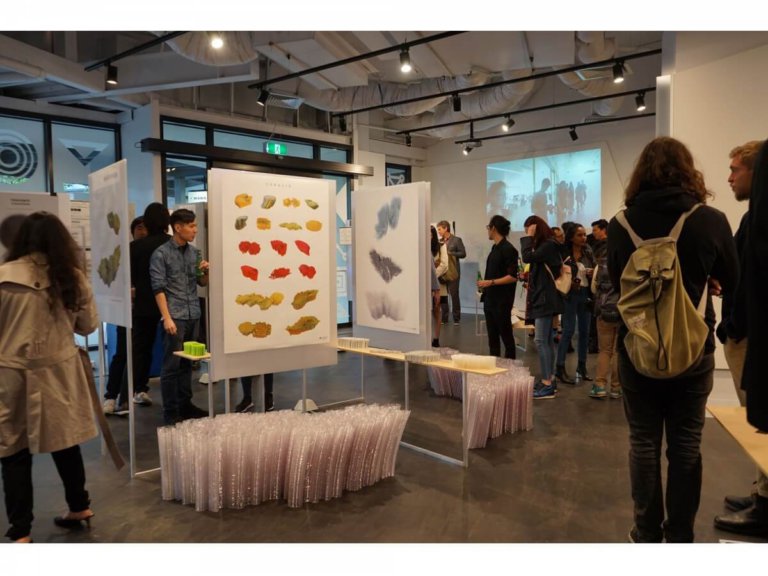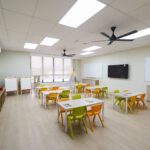
Harnessing biotech to solve environmental problems. Establishing a pop-up microbrewery in Cologne, Germany. Developing a brooch to improve quality of life for elderly Australians. Building a solar car that can withstand punishing outback conditions. Partnering with EU Horizon 2020 to look at how the arts can contribute to climate action.
Impressive? Very. Yet this is just the tip of the iceberg when it comes to the original and inspiring innovation happening at Australia’s RMIT School of Design.
The sheer depth and volume of this isn’t by coincidence. Here, at the institution ranked 12th in the world for art and design (2019 QS Rankings), students can truly excel. From hiring the best faculty to cultivating deep industry connections to investing in cutting-edge facilities, all these forces converge to ensure each RMIT student is able to achieve their creative best.
And that includes preparing them for life and work now and in the future. In addition to a wide suite of undergraduate options, RMIT offers several postgraduate programmes to nurture new leaders in the rapidly changing face of design.
The Master of Design Innovation and Technology, for example, is a blend of several disciplines, with the aim of pushing design practice into new areas by broadening students’ horizons and through the embrace of new ideas.
In this programme, students are trained to realise complex design solutions that integrate cutting-edge technology with the needs of people; they analyse current trends and future innovations within design; and formulate design solutions that bring together digital, interactive, sustainable and audio-visual technologies in the design of urban spaces.
In other words, they’re cultivating a skillset that fits design’s shift from a mere cosmetic add-on to one that’s more experiential and functional.

Source: RMIT School of Design
It’s RMIT’s close relationship with industry that makes all this possible.
“Our new School of Design brings a stronger alignment with the professions and industry, as well as enabling us to embrace new opportunities in emerging areas,” said Professor Paul Gough, RMIT Pro Vice-Chancellor Design and Social Context and Vice-President.
For Cindy Limardiono, a Master of Communication Design student, this makes all the difference between being a student with the know-how and a student who is capable of applying the knowledge learned in university.
As a student in this programme, Cindy is learning from the best. Faculty is made up of internationally renowned and award-winning design practitioners and educators. Meanwhile, programme staff exhibit internationally and have recently been nominated in the Victorian Premier’s Design Awards and received awards including the AGDA Pinnacle Award and the ABDA Designer’s Choice Book of the Year.
But it’s the real-world briefs and projects that truly distinguish an RMIT student from the competition. Work-integrated learning and visiting industry professionals delivering guest lectures mean students can network and gain valuable industry insights.
“RMIT is one of the biggest facilitators of design practice in Melbourne, and RMIT and the design industry are closely tied together. I already had a foundation in design but this programme enables me to nurture it,” said Cindy.
Recently, a team from RMIT were among the 37 finalists invited to New York City as part of the Biodesign Challenge Summit, annual student competition, in June this year. The Summit partners students with biologists, artists and designers to build collaborations, work with emerging biotechnology and engaging the public with visions for the future applications of tech.
“By participating in the challenge, students have a chance to expand their horizons about what design is and can speculate about future applications of biotechnology,” Lecturer Dr Ollie Cotsaftis, one of the mentors, said.

Source: RMIT School of Design
They placed in the top nine, beating 500 other participants.
“Having the full support of the RMIT School of Design and Master of Design Innovation and Technology was critical to our success.”
Meanwhile, in the Master of Animation, Games and Interactivity programme, students have the opportunity to work alongside ACMI X, exhibit their work at the Melbourne International Animation Festival, and have opportunities to collaborate with academic staff, industry practitioners, and RMIT research centres.
It’s this close collaboration that inspired Ole Alfheim, Master of Creative Media (now Master of Animation, Games and Interactivity) graduate, 2010 to choose RMIT in the first place. Today, he’s a senior UX designer at Rainfall AS and working on projects for a wide variety of clients, from tech startups to Norway’s largest bank, DNB
“Inspired by the research done by teachers and students at RMIT, I’m now trying to think of new ways to utilise artificial intelligence in game design and events, with a focus on emergent social interactions and virtual reality,” said Ole.
For working professionals, RMIT’s fully-online and accelerated Master of Design Futures offers a flexible and self-directed course to develop the strategic skills and tools required for leadership in design-conscious organisations. Empathic research, journey mapping, rapid prototyping and storytelling are all tools students will learn to use in their problem-solving process.
Like the other Master’s, and despite being online, this programme leverages on experiential learning practices developed in collaboration with RMIT’s Industry Advisory Board, which is made up of Australian and international designers.
Other forms of exposure to industry are in no short supply at the School too. There are more than 24,000 alumni who are making significant contributions around the world to connect with. Internships, placements and projects are usually tied to one or more courses within programmes. Year-round, there are always exhibitions, screenings, performances and panel discussions being held.
Most recently, RMIT hosted the SDNOW4 X MELBOURNE 2019, an Asia-Pacific conference about design, strategy, ethics, and futures. Industry bigwigs from Ideo Tokyo, Parsons and Huddle, to name just a few, conducted masterclasses and break-out sessions. Open to students, this meant they could access an invaluable learning experience with leading global practitioners and a small group of like-minded participants in emerging design practice like Design for Sustainability, Co-design, Futures Thinking, or System Design. Or, as in break-out sessions curated by leading local design organisations, explore and reflect upon the conference themes at greater depth through a mix of workshops, discussion groups, screenings, and open houses – each hosted at a unique location across Melbourne.
These opportunities, coupled with world-class faculty, experiential learning and a sprawling network of relationships with industry, make RMIT the most exciting design school in the world today.
Follow RMIT on Facebook, Twitter, YouTube, Weibo, Instagram and LinkedIn
Liked this? Then you’ll love…
Honing creativity in a rapidly changing world
Envisioning an innovative future: The real-world value of creative and design skills







